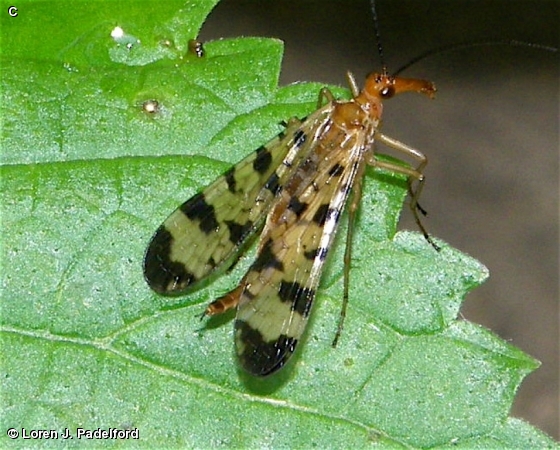
Panorpa sp.
COMMON SCORPIONFLY FAMILY (Panorpidae)
Description
This insect is approximately 3/4 inch in length. The head has an elongated “beak.” The antennae are long and black. The head, thorax and abdomen are tan colored. The wings are clear with black markings and are held in a swept-back position at rest, giving them a V-shape. Males have a curled abdomen held in an upward position. The last segment is bulbous and sharply pointed at the tip like a scorpion’s stinger, hence, the name for this insect. The abdomen of the female tapers to a slender tip with 2 small finger-like cerci. Scorpionflies do not sting and are completely harmless.
Occurrence
Scorpionflies are usually uncommon. They can be found sitting on leaves in the undergrowth.
Comments
Adults feed mainly on dead or dying insects and rarely feed on nectar and fruit. Larvae scavenge on decaying organic matter or dead insects. The larvae resemble caterpillars, but are unique in having compound eyes. They pupate in a chamber they make just below the surface of the soil. All 54 species of Panorpidae scorpionflies in North America are placed in the genus Panorpa. Adults may emit an unpleasant odor when molested.
Disclaimer: The content of NatureSearch is provided by dedicated volunteer Naturalists of Fontenelle Forest who strive to provide the most accurate information available. Contributors of the images retain their copyrights. The point of contact for this page is: Loren Padelford.






